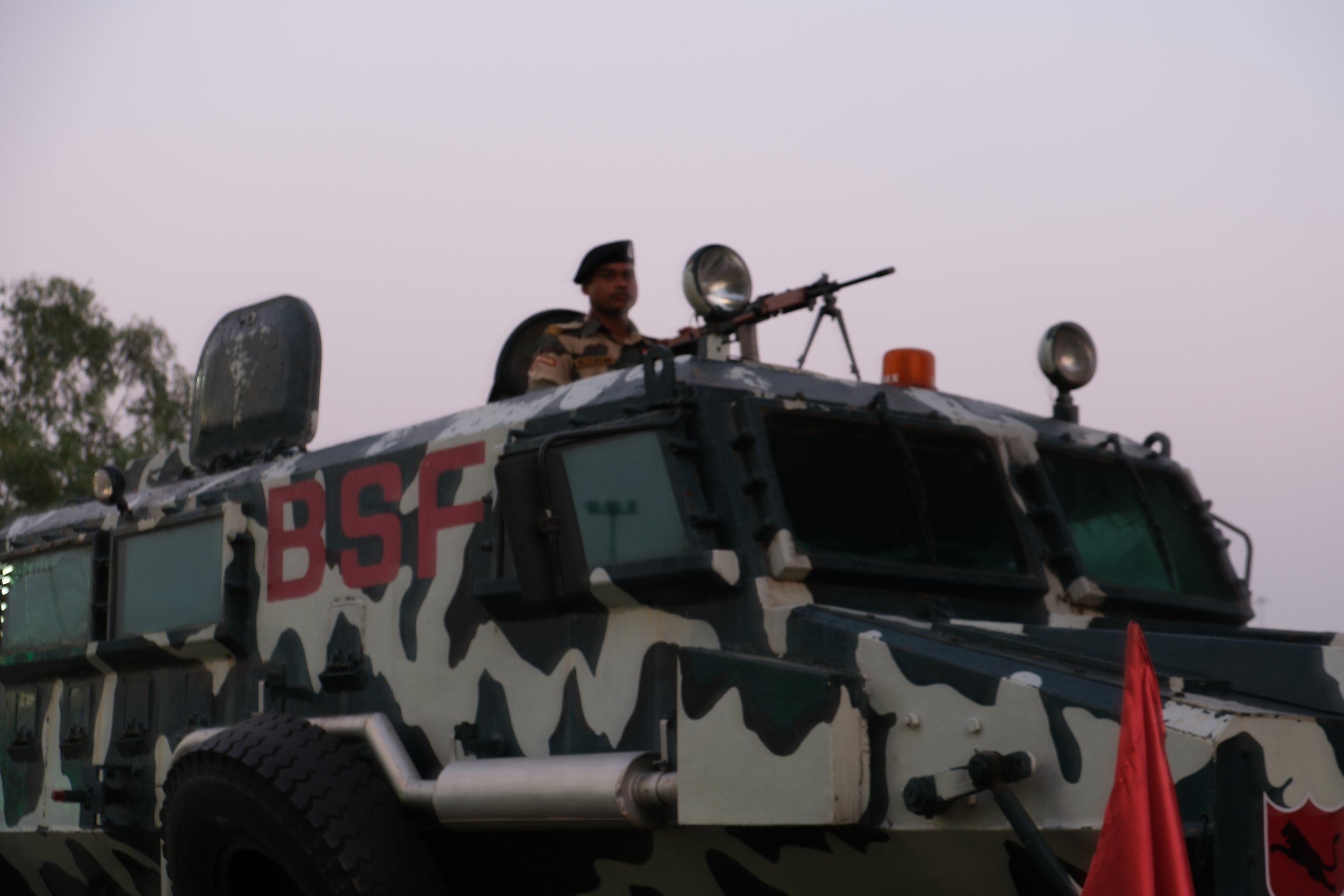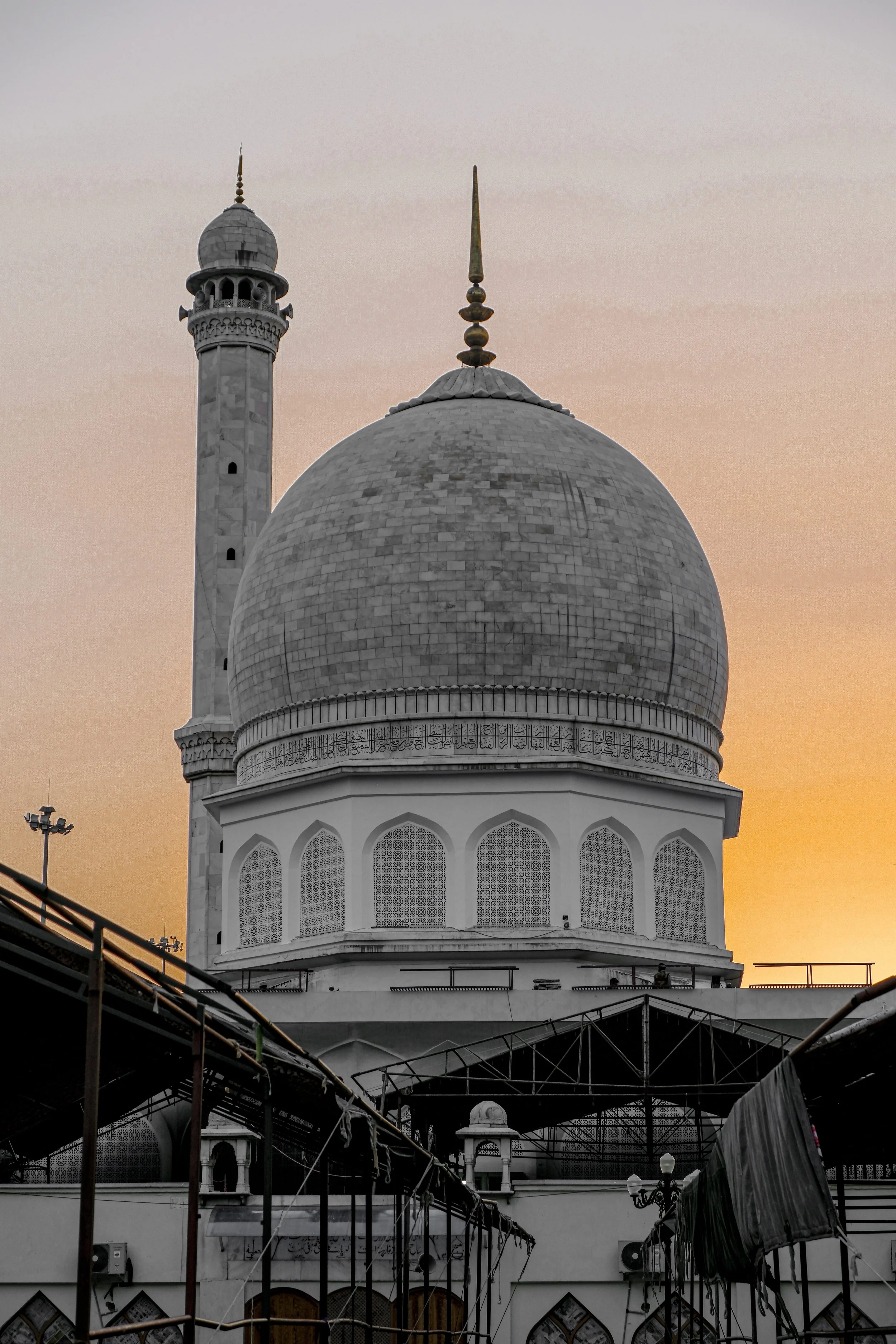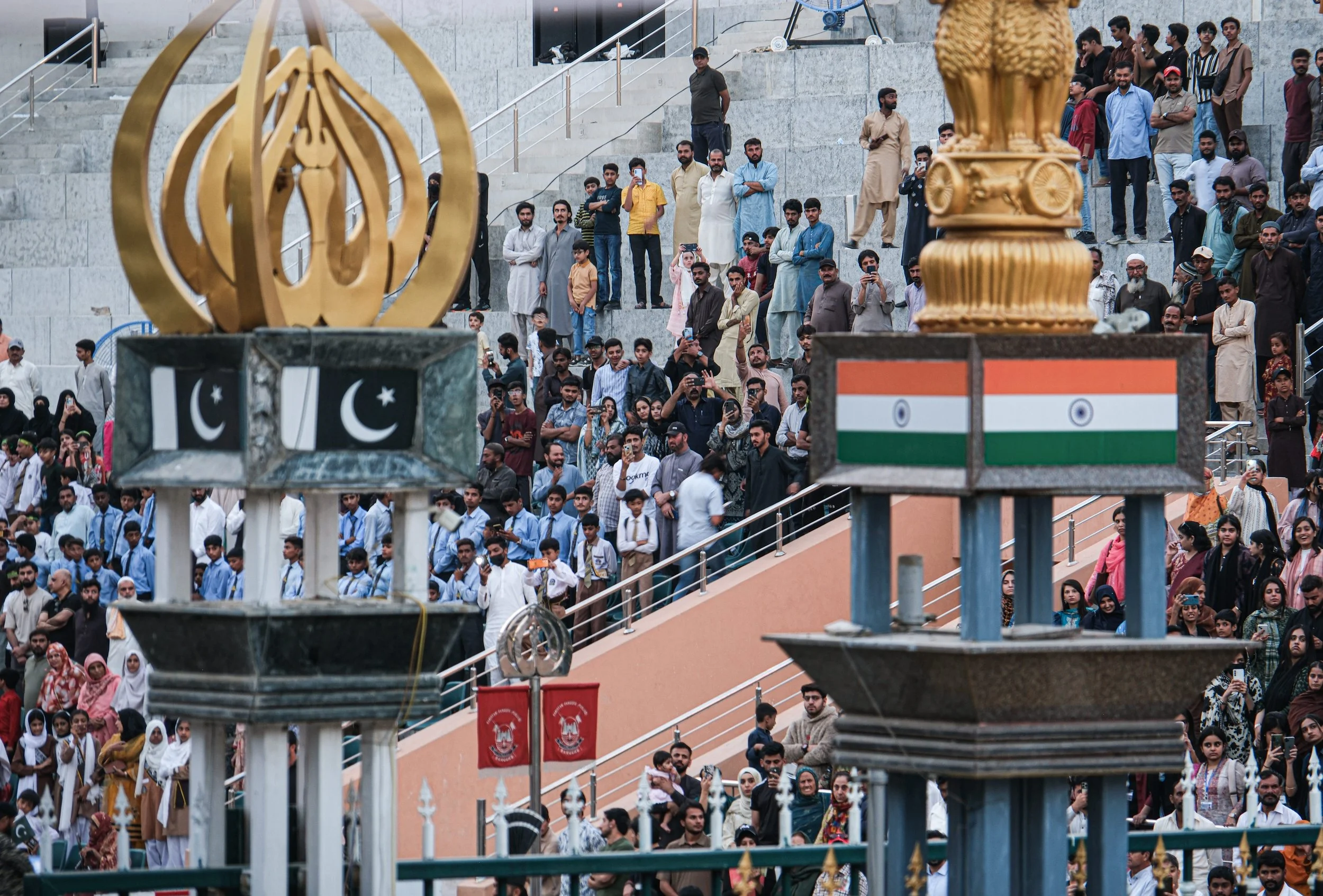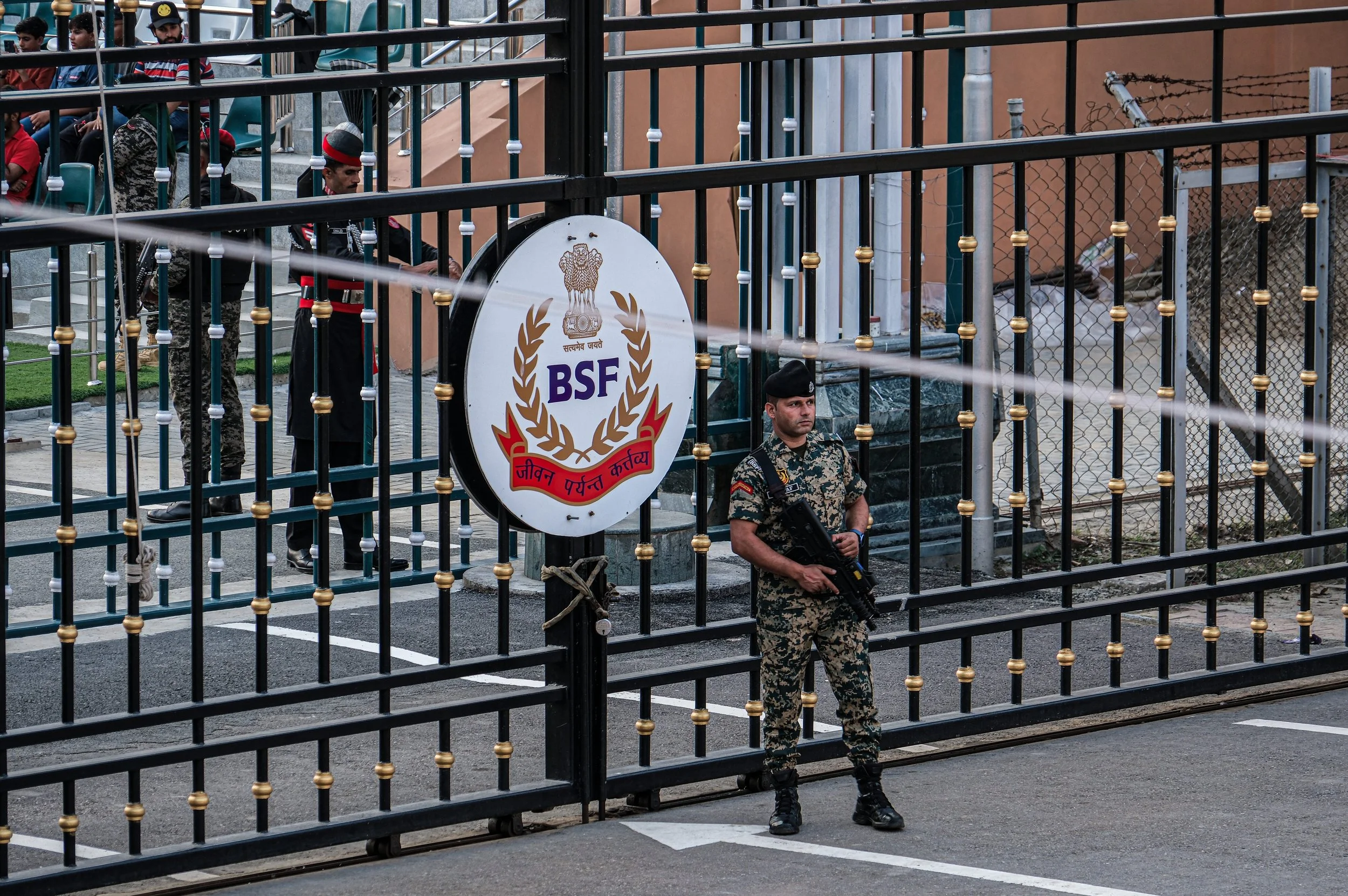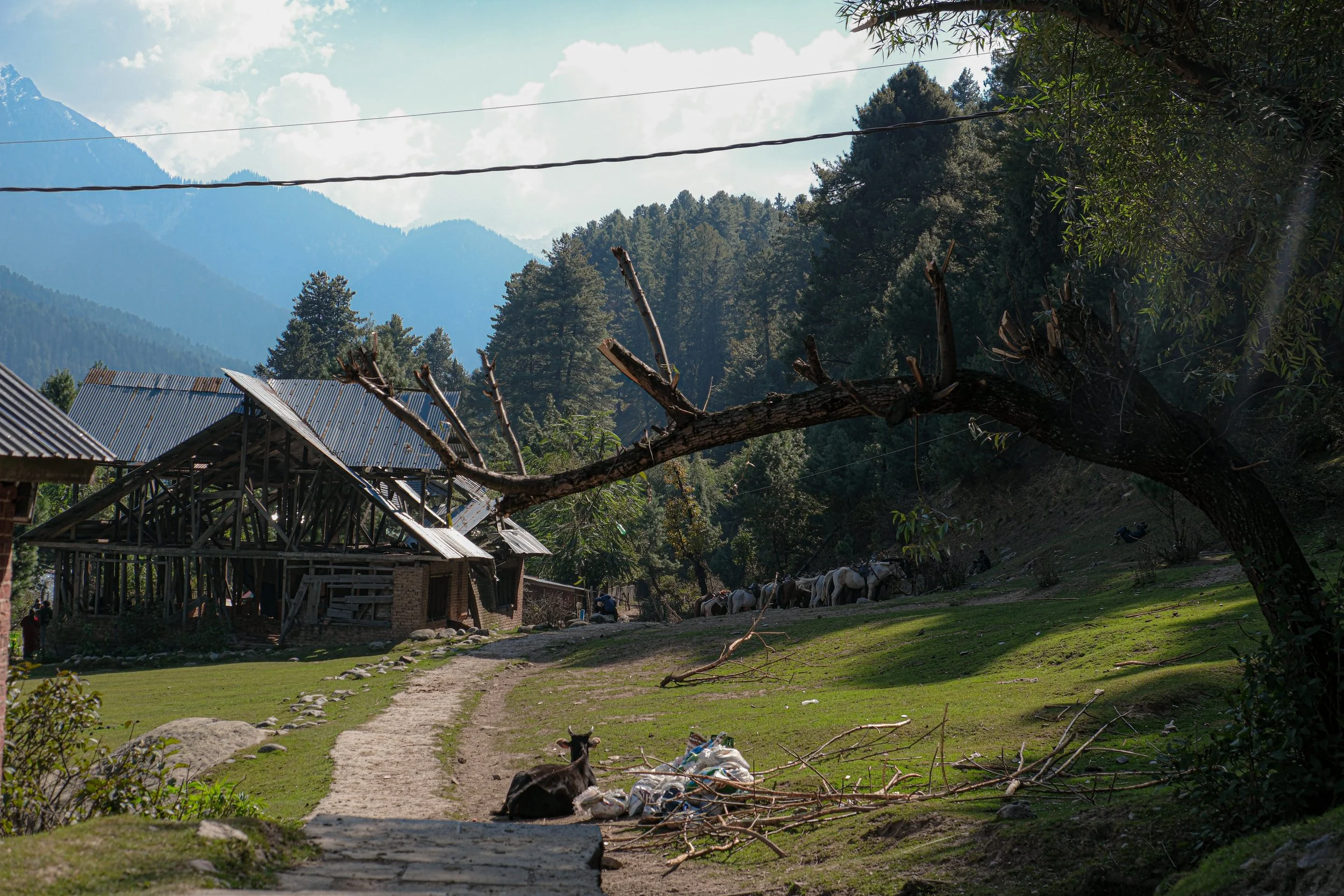TOE-ING THE BORDER LINES:
“I have been to the most paradoxical of places. Tip-toed the border lines as not to get put down, clambered up mountains and snagged my trousers on razor wire while gawping at the sun and the moon next to each other. There is no photo or video than can encapsulate quite what has been happening. A camera can not capture the paradox of overlooking the most pristine valley you have ever laid eyes on and watching plumes of birds scatter into the sky at the sound of bullets yet in those moments hearing only the flutter of wings. I have fell in love with something or someone new everyday and grew hatred for something else like clockwork. Both rage and peace have shared equal footings, a camera can not capture that. Nor can it capture the feeling of eyes on you from all angles, I don’t mean hypothetical eyes either, I’m talking about real eyes with real weapons and real intentions. My eyes saw more guns than fruitful yields and what felt like more soldiers than civilians.”
”A camera cannot capture the conclusion. The conclusion being that, In the end, you must come to accept that there is no longer much point concerning yourself with looking over your shoulder in fear because when you actually take time to look you may well realise you’re already staring down the barrel of the gun no matter what direction you face. ” - Outtakes from the diary I kept while away.
My recent trip to Indian-administered Kashmir & Punjab brought up a lot of thoughts and feelings about partition, occupation, militarisation and resistance. I began in Punjab around the Wagah-Attari border, it’s a place both Indian and foreign tourists pool down to in large numbers to watch the Indian and Pakistani military face off in a strange daily performance. The day before attending the ceremony, I was awoken by a news alert stating that India had signalled their readiness for Operation Sindoor 2.0.
In May of this year, Operation Sindoor was launched by the Indian military under the guise of “targeting and dismantling terrorist infrastructure within Pakistan,” after the attack in Pahalgam of Indian-occupied Kashmir, which left 26 civilians dead. Indian authorities claimed that all 3 of the attackers were Pakistani citizens and part of the UN-proscribed militant group, Lashkar-e-Taiba (LeT). The main demand of LeT is for the merging of all Kashmiri territory with Pakistan. They are widely regarded as the organisation responsible for the more-known attack on Mumbai in 2008 that left 166 people dead. Though Pakistan still denies any role in the Pahalgam attack, other nations have refused to acknowledge their ‘false flag’ claims. Though, a lesser known group called the ‘Resistance Front’ which emerged in 2019 claimed responsibility for the attack, the US and India partly dismiss this and claim the group is merely a front for LeT. Though it would be desirable to know which group carried out the attack and what exactly their demands and goals are, our main focus right now is to reflect on what Operation Sindoor actually looked like and what it means for the future of South Asia. We know the assumed culprits are not the ones to have suffered the brunt of the missiles and destruction. There were missile strikes across a multitude of locations, including a mosque in Pakistan-administered Punjab which killed a child. Many of the 40 Pakistani civilian casualties were women and children. Pakistan struck back at India, which led to 21 civilian casualties. It begs the question whether LeT are really behind the attack or whether India does not want to admit that disdain for the occupation runs so deep within Indian occupied Kashmir that armed resistance is returning. It is easier to pass the blame on to a neighbouring state with which countless disputes have occurred than to admit that the current situation may foster strong reactions from the populations who reside within the world's most militarised zone. The conclusion that LeT carried out the attack and were funded by Pakistani authorities may seek to make the culprits look far more advanced than they potentially were, as to avoid criticism of Indian military weakness against more local militias. Ultimately, we do not know, but there are assumptions and much analysis that can be made.
At the Wagah border ceremony, there are big electronic screens displaying all kinds of military footage and propaganda. From fighter jets, to quad-copters and tactical armoured vehicles; India seeks to show off their weapons of mass destruction alongside footage of them in action and strange AI generated or doctored footage. This footage loops in the background while crowds congregate in the seating arena. The parade eventually begins and it consists largely of soldiers marching while throwing guns to and fro, accompanied by chants from the crowd of “Hindustan zindabad” and various other displays of support and encouragement. Unfortunately, I could not share the joy of my fellow spectators, for I have seen what this kind of nationalism really means. There are many faces of Indian nationalism and many endeavours of its military. Hindutva, the ideology of Hindu nationalism and of establishing Hindu hegemony, is rising within India and it has real and measurable consequences for, not only non-Hindus, but many lower castes of Hindus too. The idea of Hindutva is backed by the ruling party of India, the Bharatiya Janata Party (BJP) and the Prime Minister, Narendra Modi. It would not be far-reaching to call the ideology a fascist, far-right and extreme one. Behind the bright sparkling fabrics, the sprawling landscapes, the smiles and the undeniable charm of India, there is a dark underbelly that reflects the rise and return to fascism within post-colonial nations. Though, arguably, India has became the colonial nation now.
A few hours north of Wagah is the state of Jammu & Kashmir (J&K) and that state lives under occupation. Kashmir has an incredibly long history of fighting for independence and against occupying forces. In 1528 the Mughals unsuccessfully tried to annex Kashmir for the first time but succeeded in their attempt in 1586. In 1752 Afghan rule began over Kashmir until 1819 when the Sikh empire seized control. Then, in 1846, after the British defeated the Sikh Empire, they sold off Kashmir to the Dogra dynasty. In all of these eras of rule in Kashmir, intense violence was widespread against Kashmiris and heavy taxation was imposed. The more modern emergence of an independence movement is widely regarded as the freedom movement beginning in 1930 against Dogra rule. In 1947 the subcontinent was partitioned and though the last Maharaja, Hari Singh, had originally backed independence, after an invasion from Pakistani tribesmen he signed the accession of Kashmir over to the Indian state in return for military assistance. This led to the first Indo-Pakistani war fought over the disputed territory. A ceasefire was reached in 1949 alongside a de facto border. Another war was fought in 1965 which ended in 1966 with the Tashkent Declaration. In 1971 there was a third Indo-Pakistani war fought during the Bangladesh Liberation War. In 1972 the previous ceasefire line of Kashmir was finalised and renamed the Line of Control (LoC) as part of the Simla agreement. The LoC cut straight through villages and grazing lands, it divided families and displaced large numbers. It continues to displace more and more people every time conflict arises on the border. Though the official number is unknown, there was thought to be more than 120,000 displaced along the border during the conflict of this year.
One of the most significant things that stood out to me about the conflict and more widely the Indian Military is the import and use of Israeli arms and technology. There can be no doubt that Israeli manufactured weapons are advanced and designed for maximum brutality. It just so happens that India is the single biggest importer of Israeli Weapons. This in turn means that weapons which are not being used against occupied Palestine are being used against occupied Kashmir and vice versa as India also manufactures weapons that are sent to Israel. In fact, just this week, Israeli and Indian authorities met to strike up a new deal which will emphasise defence and industrial co-operation. In May there were reports of Israeli suicide drones and IAI Herons (Unmanned Aerial Vehicles) being used by India against Pakistan. They also used the Barak 8 missile defence system, which was jointly developed by the two states. Much of the technology that India makes use of is for the purpose of surveillance and reconnaissance. Even down to the assault rifles, machine guns and submachine guns used, most are Israeli manufactured. They also use Airborne warning and control systems which mean that they can detect enemy aircraft and arms from a huge range. Ultimately, India has access to some of the most advanced weaponry in the world. Yet, as diplomatic relations between Israel and India strengthen, so do relations between Pakistan and China. China is the most significant supplier of arms to Pakistan and China too has incredibly advanced arms and technology. Though the key difference between these two relations is that Pakistan's reliance on China for arms and increased military spending is leading to economic instability and opening the nation up to further vulnerability. Pakistan is increasingly becoming reliant on loans from Beijing and therefore risks debt entrapment. The China-Pakistan relations raise huge concerns for India due to the potential levelling up of military resources and how that may affect the future of conflict and war in the region of South Asia. India is considered to be the worlds biggest democracy, to have a military on par with Pakistan would be devastating to their global image. A relevant point to make is that the Chinese military has been making advancements into Ladakh, India and increasing their military presence. The Indian government continues to deny most claims that China have seized grazing land or embarked on infrastructure projects in the region. It is unclear wether the denial comes from a place of complicity and secret relations or wether the denial comes from a place of fearing being viewed as weak. The later option seems most likely. Relations between India and China are undeniably contentious and volatile, in recent history border tensions have flared into combat and fatalities.
The dispute over Kashmir, from the perspective of India, is one of Hindutva and the vision for Hindu hegemony. Ultimately, Kashmiri Muslims are threatened and restricted. There is a long history of and a strong current sentiment of violence against Muslims in India and Kashmiri Muslims in particular. Though I do not forget the Kashmiri Pandit exodus or the brutality they faced, I think it is reductive and using the Pandits as pawns to excuse Hindu Nationalist violence by mention of the plight. There is an incredibly complex and heavy history to Kashmir, unfortunately much of that history has and continues to be rewritten by India to avoid blame for controversial and brutal acts. If much of the most significant history is omitted, it becomes incredibly difficult to understand who Kashmir is and why she is in the state that she is. Kashmir serves as a reflection and a standard for those who seek independence across the globe. I truly believe that without solving the crisis of Kashmir and without Kashmiri sovereignty, there is little chance of other nations conceding to those they occupy. Kashmir is more than just an occupied territory, Kashmir is a globally held sentiment of hope for autonomy and freedom.

